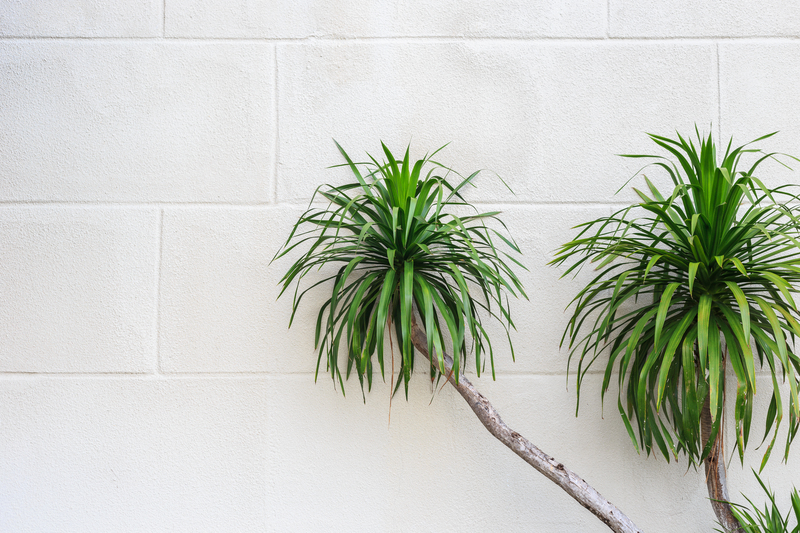Building a Beautiful Lawn: Foundational Tips for Beginners
A lush, vibrant lawn doesn't just enhance your home's curb appeal--it creates a welcoming space for outdoor activities and relaxation. But growing and maintaining a beautiful lawn can seem daunting, especially for beginners. Fortunately, with the right foundational tips, anyone can turn a patchy, lackluster yard into a stunning green oasis. In this in-depth guide, you'll discover the best practices and essential steps required for building a beautiful lawn, tailored specifically for those new to lawn care.
Understanding Your Lawn's Needs
Before you start planting or renovating, it's crucial to understand the foundations of lawn care. Every yard is unique, and success starts with recognizing the specific needs of your lawn. Consider the following factors:
- Climate: Different grasses thrive in different climates. Know your local temperature ranges and seasonal patterns.
- Soil Type: Loamy, clay, and sandy soils each retain moisture and nutrients differently.
- Sunlight: Assess how much sun and shade your lawn receives throughout the day.
- Water Availability: Understand your area's rainfall patterns and water restrictions.
Soil Testing: The Cornerstone of a Healthy Lawn
Healthy soil is the foundation for a beautiful lawn. Start your lawn-building journey by conducting a soil test, which can typically be purchased at garden centers or through local cooperative extensions. Analyzing your soil will tell you:
- Soil pH balance (ideal is typically between 6.0 and 7.0)
- Nutrient content (nitrogen, phosphorus, potassium)
- Soil texture and organic content
By understanding your soil's specific needs, you can choose the right fertilizers and amendments, ensuring your grass gets off to the best possible start.

Choosing the Best Grass for Your Region
Selecting the right grass is vital for building a beautiful lawn. Not all grasses are created equal; they are broadly classified into cool-season and warm-season varieties.
Cool-Season Grasses
- Ideal for northern climates where winter temperatures are low and summers are moderate.
- Popular choices: Kentucky bluegrass, perennial ryegrass, fine fescue.
- Thrive in temperatures between 60?F and 75?F (15?C to 24?C).
Warm-Season Grasses
- Best suited for southern regions with hot summers and mild winters.
- Popular choices: Bermuda, zoysia, St. Augustine, buffalograss.
- Flourish when temperatures are between 80?F and 95?F (27?C to 35?C).
*Pro tip: Visit local nurseries or consult your county extension agent for region-specific recommendations to build a beautiful lawn that thrives year-round.*
Preparation: Setting the Stage for Lawn Success
Proper preparation is the difference between an average lawn and an exceptional one. Building a beautiful yard begins with prepping the ground for optimal seed or sod root development.
Clearing and Leveling
- Remove rocks, weeds, and debris. Weeds will compete with grass for nutrients and water.
- Fill in low spots and break up compacted soil with a rototiller or shovel.
- Rake the area until it's level and smooth.
Soil Conditioning and Fertilization
- Add organic matter like compost to improve soil structure and drainage.
- Apply starter fertilizer tailored to your soil test results (watch for proper N-P-K ratios).
- If the pH is off, add lime (to raise) or sulfur (to lower) as needed.
Methods for Establishing Your Lawn
There are three main methods to establish a new lawn: seeding, sodding, and hydroseeding. Each has its benefits and considerations.
1. Seeding a New Lawn
- Most cost-effective option.
- Best done in fall (cool-season grasses) or late spring/early summer (warm-season grasses).
- Requires careful soil preparation, consistent watering, and patient maintenance.
2. Sodding for Instant Results
- Provides an instant green lawn and strong erosion control.
- More expensive than seed, but rapid establishment.
- Must lay sod promptly to avoid drying out; water heavily the first few weeks.
3. Hydroseeding
- Slurry mixture of seeds, fertilizer, mulch, and water sprayed over prepared soil.
- Faster establishment than traditional seeding, less expensive than sod.
- Ideal for large or sloped areas for uniform coverage.
Regardless of method, consistent moisture and gentle care are crucial for initial germination and root establishment.
Watering: The Lifeblood of a Beautiful Lawn
New grass needs consistent watering to thrive. As your lawn matures, proper irrigation practices are vital for long-term health and lushness.
- Water deeply, but infrequently, to encourage deep root growth (typically 1-1.5 inches per week).
- Early morning is the best time to water; avoid evening watering to prevent disease.
- Use a rain gauge or tuna can to monitor how much water your lawn receives.
- Adjust based on weather conditions, grass type, and soil composition.
Mowing Like a Pro
Many beginners overlook the importance of proper mowing, but it plays a significant role in building a healthy, beautiful lawn. Here are some mowing best-practices:
- Keep mower blades sharp to avoid tearing grass blades (dull blades can cause disease).
- Never cut more than one-third of the grass height at a time--this reduces stress.
- Vary mowing patterns to prevent soil compaction and uneven turf wear.
- Avoid mowing when grass is wet to prevent clumping and root damage.
*Bonus tip: Let grass clippings decompose on the lawn--they return valuable nutrients to the soil.*
Fertilization: Feeding Your Lawn for Success
Just like any living thing, grass needs food to flourish. Fertilizing your lawn replenishes key nutrients, especially nitrogen, phosphorus, and potassium.
- Apply fertilizer according to your specific grass type and climate.
- Follow a seasonal schedule--typically, early spring and fall for cool-season; late spring for warm-season lawns.
- Use slow-release fertilizers for steady, sustained growth and to reduce runoff.
- Water immediately after fertilizing to help nutrients soak into the soil.
Weed and Pest Control: Defending Your Turf
A beautiful lawn is a healthy lawn--free from invasive weeds and damaging insects.
Weed Management
- Hand-pull or spot-treat weeds as soon as they appear.
- Use pre-emergent herbicides in early spring to prevent annual weeds like crabgrass.
- Maintain a thick, healthy lawn--dense turf naturally crowds out weed growth.
Pest Control
- Identify common turf pests in your region (e.g., grubs, chinch bugs, sod webworms).
- Encourage beneficial insects and birds that eat lawn pests.
- Use targeted, environmentally friendly treatments as needed.
Aeration and Overseeding: The Secret to a Fuller Lawn
Periodically aerating your lawn relieves soil compaction, improves water/nutrient absorption, and promotes stronger root growth. Overseeding fills in thin patches, maintaining a lush, thick appearance.
- Aerate once per year, ideally in the fall for cool-season or spring for warm-season lawns.
- Overseed immediately after aeration for best seed-to-soil contact.
- Apply a light layer of compost to help germinating seeds establish quickly.
Seasonal Lawn Care Calendar
To continually maintain and enhance a healthy green lawn, follow a basic seasonal maintenance schedule:
- Spring: Test soil, fertilize, apply pre-emergent weed control, mow, and repair bare spots.
- Summer: Water deeply, mow regularly, watch for heat/drought stress, manage pests.
- Fall: Seed, aerate, fertilize, remove leaves/debris, reduce mowing as grass slows.
- Winter: Limit foot traffic, keep lawn free of leaves. Prepare for spring.
Common Mistakes Beginners Should Avoid
- Overwatering or underwatering--both can damage roots and invite disease.
- Mowing too short ("scalping"), which stresses grass and exposes soil.
- Using the wrong fertilizer or applying too much--more is not always better.
- Neglecting soil health and regular soil testing.
- Ignoring early signs of pests, disease, or weed invasion.

Frequently Asked Questions About Building a Beautiful Lawn
How often should I water my new lawn?
Water lightly but frequently (daily) for the first 2-3 weeks, then transition to deeper, less frequent watering as the grass establishes.
When is the best time to fertilize my lawn?
Apply fertilizer in early spring and fall for cool-season grasses--late spring or early summer for warm-season varieties. Always follow guidelines for your specific grass and soil test results.
Can I plant grass in the shade?
Yes, but choose shade-tolerant grasses like fine fescue or St. Augustine and avoid over-fertilizing shaded areas, as growth is naturally slower.
Conclusion: Start Your Beautiful Lawn Journey Today
Building a beautiful lawn is achievable, even for beginners! By starting with proper soil preparation, choosing the right grass, and committing to smart watering, mowing, and fertilization practices, you'll cultivate a lawn that's the envy of your neighborhood. Remember, patience is key--lush, healthy lawns don't happen overnight, but with consistent care and attention, your outdoor space will flourish. Whether you aspire to weekend picnics or simply want a pride-worthy view out your window, these foundational tips will set you on the path to a beautiful, thriving lawn.
Ready to get started? Grab your gloves, test your soil, and take the first step toward building your dream lawn today!